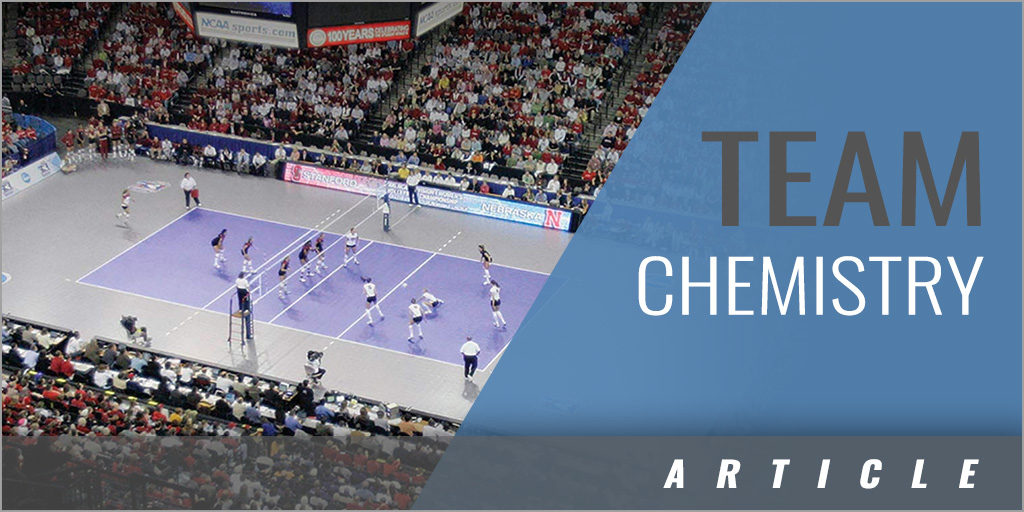|
By: Randy Dagostino Originally Published in: The Volleyball Coaching Bible Volume II Provided by: Human Kinetics I have had the good fortune over a lot of years of coaching this sport to see many successful coaches interact with their teams in many different ways. Some are very quiet and command the attention of their players because they have to listen carefully just to hear the message. Others are very loud and somewhat intimidating, at least to the casual onlooker, but this seems to work for their teams. Some coaches have the patience of a saint and, during a match, use everything that occurs as a teachable moment, almost to the point of letting the match get away from them. Others have a quick hook, meaning that they substitute players out for what appears to be the first miscue or error (especially to these players' parents). The most successful coaches know their teams so well that the buttons they push on the sidelines and the timing of their messages are completely familiar to their players. Knowing your team well and forming bonds to create a good team is something to focus on constantly. In any given year, a coach may have a group of talented players who are superior to most of the opponents they may face. That coach is going to win a lot of matches with such a gifted group. However, in order to beat the toughest opponents the individual players will have to fulfill a specific team role. I have said for a long time that I would rather have a collection of players who have good ability and are good learners than one or two amazing players who need to carry the team. My reasoning is quite simple. When a team has a few stars, what happens if one of those stars has an off game? Or what if the team plays against such a well-coached team that the stars are limited in what they can produce? I think the answer is pretty clear: this team loses. The team that has a collection of good players who fulfill their roles ends up being pretty tough to beat. The key is a coach who can manage the egos and get across to the team that if each player takes care of her part of the game, they will win a lot. This concept goes hand in hand with the idea of a coach not putting limits on players. The coach is responsible for identifying the attributes each player brings to the team and then devising a plan, with these talents, to put a successful team in motion. It would be very easy from the outset for a coach to dwell on the shortcomings of a team or certain players. Another concept entirely is to embrace the challenge of "coaching this team up" to new levels of success. The secret is to let players consistently know, in every practice and every set played, what they must do to fulfill their roles so that the team will succeed. The following player story is an example. I am presently coaching a boys' 18s team. From the outset I knew that the setter on this team is the best and most knowledgeable player I have ever coached. He is a born leader and the engine that would make any team go. He is also very good at disguising his sets and, because of that, would create many one-on-one situations for his pin attackers. In the first practice of our season, within the first 10 minutes, I walked up to our 6-foot, 5-inch left-handed opposite, whom I did not know, and said, "You will be our terminating attacker on this team." I could tell by the expression on his face that no one had ever said something of that importance about his contribution to a team before. I backed it up by saying, "In free-ball situations, I do not want you to worry about playing any ball." Continuing, I said, "You are to transition off the court and get ready to terminate the ball, because you know our setter is going to create the best possibility for that to happen." At the same time, I announced to the team that this would be our strategy. Now I needed to make sure everyone else bought into this change. I told our middles that on this play they would now retreat to zone 2, a place where well-coached teams like to send free balls. Our middles were going to have to get better at playing this short ball high enough, most likely with their hands to our setter, to keep themselves as options for free-ball plays. They would also then attack, moving back in front of our setter to draw more attention away from our opposite. At the same time, I told our libero that he should now have a clear view of the free ball coming to our side of the court, and I knew that he had the speed and the talent to cover the space on our side of the court. I told him that his goal was to be mobile and vocal enough to play the majority of the free balls. Certainly, our outside and middle-back players were ready to cover their spots on the court. At this point in our season, after going to two very competitive national qualifying tournaments, it is clear that my assessment was dead on. Our setter is creating a ton of one-on-one situations for our pin attackers, and because of that, our opposite is clearly our leading terminating attacker. I could continue with examples here, but the point is that, as a coach, you must recognize the differences in your players - physical attributes, mental maturity, and game experience. Then you must coach to each player's strengths to find the best way for them to contribute to the team. This means that you may need to tell players in the same position, such as outside hitters, to each focus on something different. The game of volleyball is built around errors, so as you recognize the strengths of your nonstarters, you can create a learning atmosphere in which they can contribute when the starters are not performing at their peak. Your goal should be to convince each player that a positive contribution, in any form, affects the team's success and is therefore critical to the team as a whole. Much like the sixth player in basketball or the utility player in baseball, players who can come off the bench and make an immediate positive impact in multiple positions are valuable to any team. On the best teams I have coached, I have also had players take on what may appear to be more limited roles, but I know that they have felt the importance of their contributions. Developing a defensive specialist who can enter the game and make positive plays because he believes he has great instincts for the game, or a serving specialist who knows that her serve is critical to begin a rally in a position of advantage is a crucial coaching skill. Creating these roles can generate a special chemistry among athletes who have never played together before because they are made to feel that they are all important to the team's success and they understand the scope of their contributions. |






